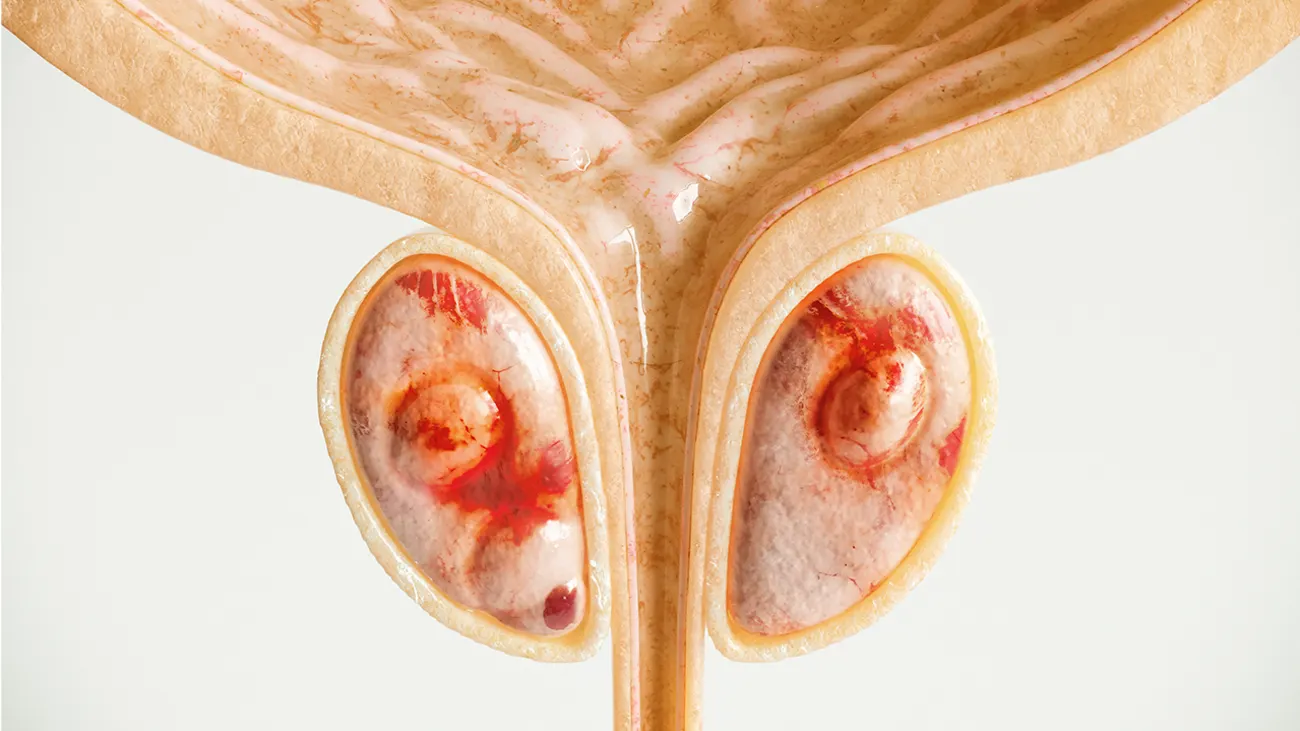
Keck Medicine of USC physicians are investigating whether artificial intelligence can raise the accuracy of the Prostate Imaging Reporting and Data System (PIRADS).
Artificial intelligence is strengthening current tools for detecting prostate cancer. During the first annual AI West Med Symposium, a Feb. 1 event founded by physicians from USC Urology, part of Keck Medicine of USC, symposium co-director and urologist Andre Abreu, MD, explained how he and his USC Urology colleagues, along with Keck School of Medicine of USC researchers, tested whether AI can improve the commonly used Prostate Imaging Reporting and Data System (PIRADS).
PIRADS is a standardized tool used globally to analyze magnetic resonance imaging (MRI) prostate scans. One limitation of PIRADS is that the system can sometimes fail to detect clinically significant cancer. For instance, Abreu said, in cases when a PIRADS score is 1 or 2 — a number associated with a lower likelihood of clinically significant cancer — there might actually be a 10%-15% chance that the cancer is clinically significant.
“The system cannot identify 10%-15% of those cancers on MRIs,” Abreu said.
Additionally, in PIRADS 3 cases (considered an ambiguous likelihood of prostate cancer), patients may end up undergoing invasive prostate biopsies that could otherwise have been avoided had their scans been evaluated by a more reliable system — such as one powered by AI — that can determine if a cancer is indeed suspicious or not.

Can AI help?
During the AI West Med Symposium, held at the USC Health Sciences Campus in Los Angeles, Abreu described a retrospective study that he and his colleagues recently conducted to test whether integrating AI in PIRADS can improve the detection of clinically significant prostate cancer.
A multidisciplinary team worked on this study, including engineers, urologists, radiologists and pathologists from USC Urology, the USC Viterbi School of Engineering at the Keck School of Medicine of USC and the Keck School’s Department of Radiology and the Department of Pathology.
The researchers examined the medical records of 755 patients who had previously undergone an MRI for prostate cancer and whose MRI results radiologists had analyzed using the conventional PIRADS tool. These patients then underwent biopsies, which revealed if they had clinically significant prostate cancer.
In their retrospective study, Abreu and his colleagues re-analyzed those MRIs, this time using an AI-powered version of PIRADS. They fed the patients’ MRI scans to a machine learning model they call the Prostate Artificial Intelligence Imaging and Reporting Data System, or PAIRADS.
According to Abreu, the artificially enhanced PAIRADS system correctly detected clinically significant prostate cancer comparably to the original biopsy data, with an area under the curve of 80%. When the PAIRADS data was combined with radiologist interpretation of the MRI, the area under the curve improved to 91%, said Abreu, citing interim results from unpublished data.

Ongoing research
Abreu and his colleagues are now starting a prospective study to test if the improved accuracy in the retrospective study holds true. In the new study, radiologists and the artificially intelligent PAIRADS system will both evaluate new MRIs. Their results will then be compared to the results of biopsy analysis.
“With this study, we will be able to tell if the radiologist performed better, if the AI performed better, or if a combination of both will actually perform better,” Abreu said.
Moving forward, AI could play a critical role in prostate cancer screening and diagnosis. “We will likely improve cancer detection,” Abreu said. “We will have better standardization in automatization and reporting.”
USC Urology
At USC Urology, patients gain access to specialists, including more than 60 surgeons and oncologists, who treat all urologic conditions, including prostate cancer and kidney stones. USC Urology is known for world-class surgeries, including advanced robotic, endourologic, open, prosthetic, reconstructive and microsurgeries. The internationally recognized team specializes in the diagnosis and management of all urologic conditions, from the simple to the most complex.
Topics
